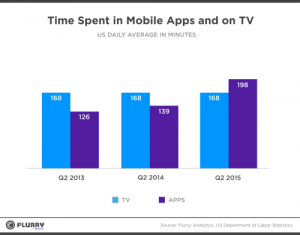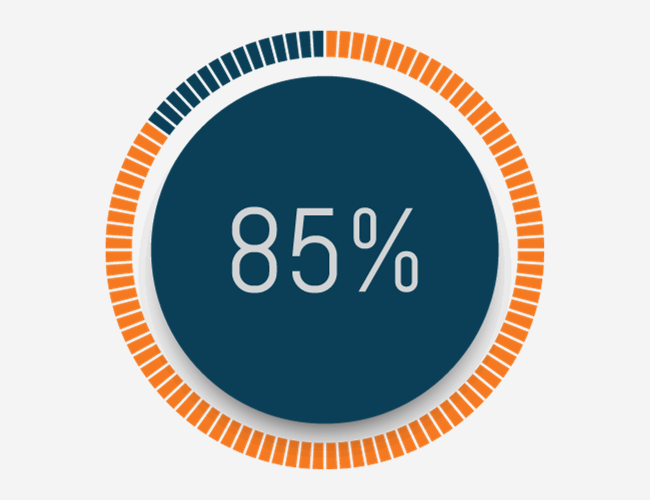A new report from Flurry highlights that “apps now reign supreme as the top media channel in the United States, even without the help of the mobile browser.” For the first time ever, the time U.S. consumers spend inside apps exceeded the time they spent watching TV. According to the company’s data, the average U.S. consumer is now spending 198 minutes per day inside apps compared to 168 minutes on TV. That app figure, however, doesn’t include time spent inside mobile web browsers. If mobile browser activity was included, the time spent on mobile devices would reach 220 minutes. While time spent using apps continues to increase, the time spent on TV hasn’t changed in the last two years.

The increase in app usage comes as no surprise, but now it is official that the majority of Americans are mobile centric in their media consumption. Employers should take this into consideration when thinking about the best ways to engage their employees. If employees are most engaged with mobile apps, these technologies should be a staple of all programs. The good news is that the vast majority of the consumer wellness apps are free to download, which will reduce long-term costs and provide employees with the ability to change apps for free if they find something else they prefer more.
As we discussed in a previous post, the number of apps used monthly by consumers in the U.S. is not increasing. Users are spending more time in approximately 27 unique apps rather than increasing the number of apps they are using. This is also an important consideration for employers. It signifies the need for employers to use popular consumer apps for their mobile strategy rather than a proprietary app from a wellness vendor. Proprietary apps stand little chance of breaking into the top 27, and as a result, they cannot deliver sustainable engagement. If you need further validation, check out the app reviews for the proprietary apps from popular wellness vendors.












